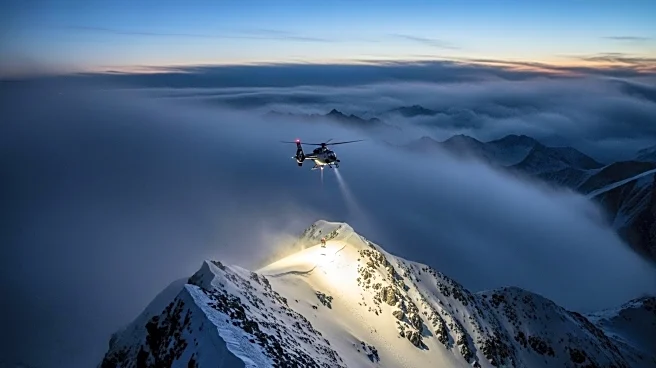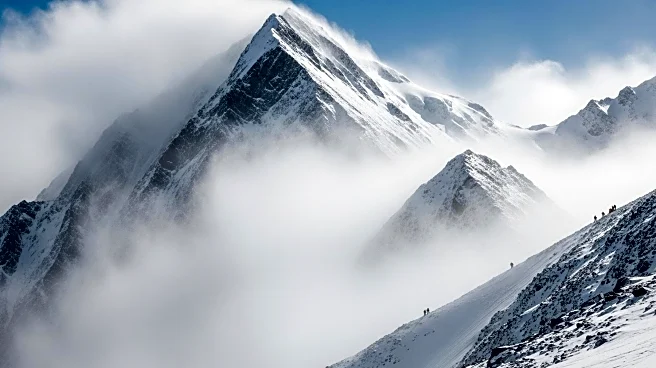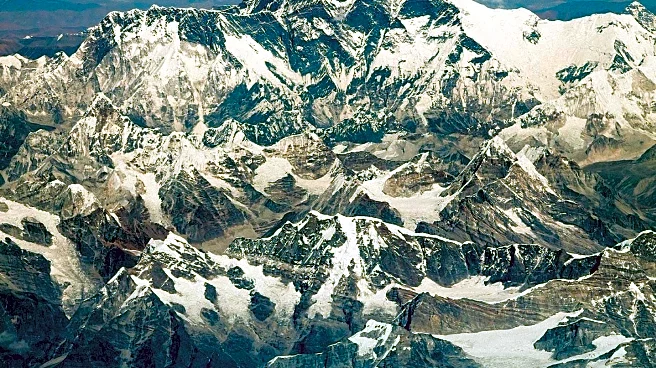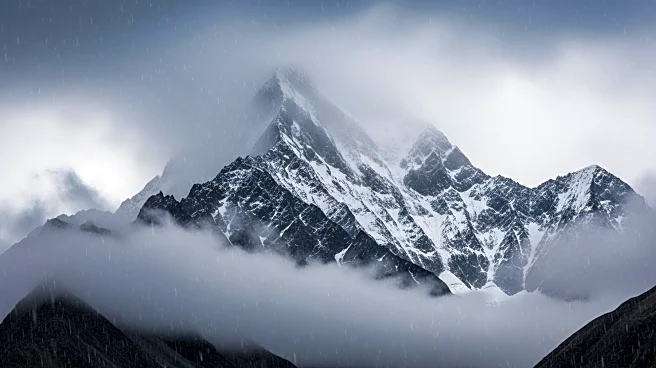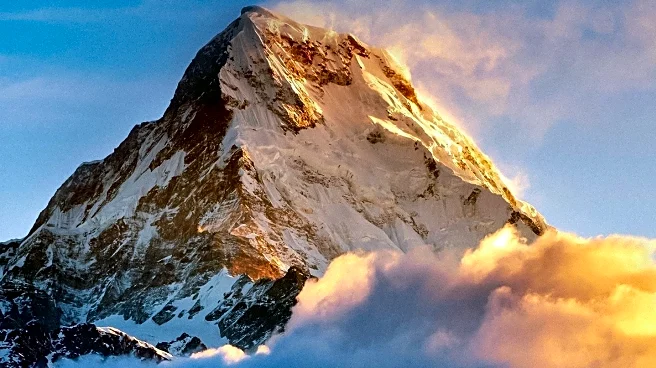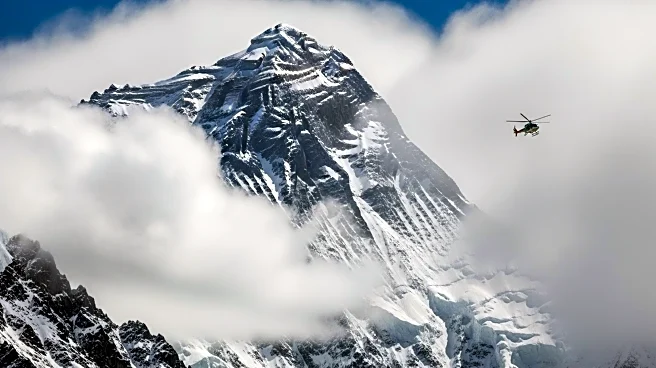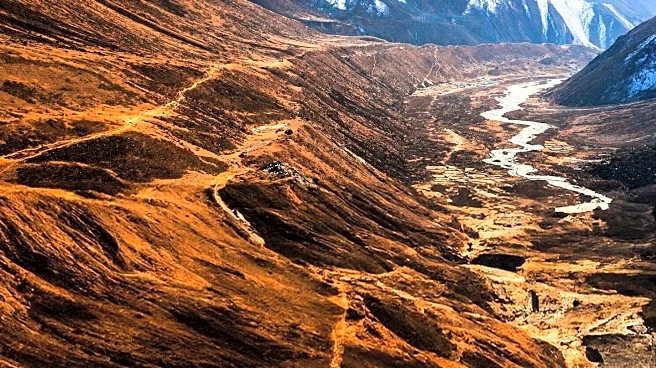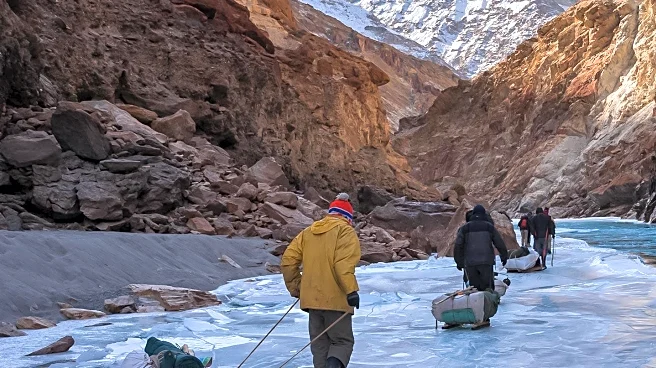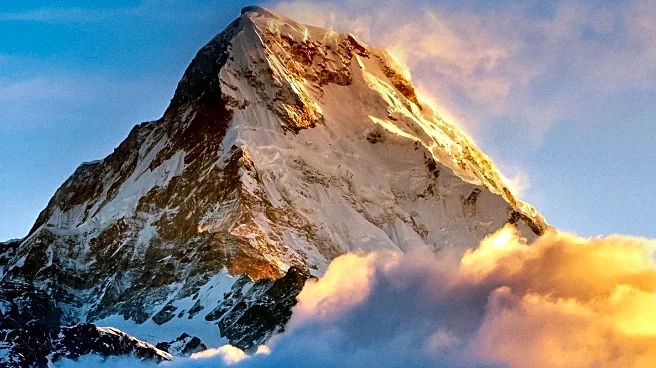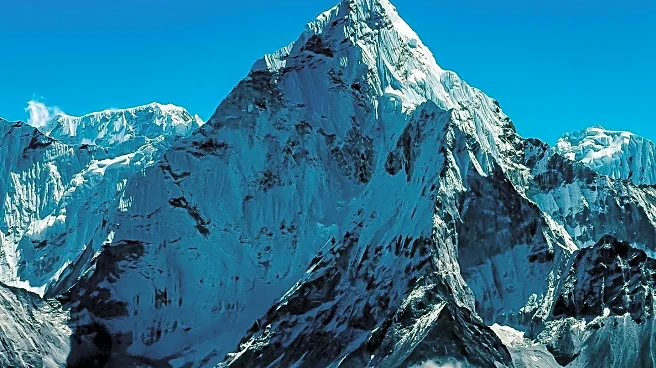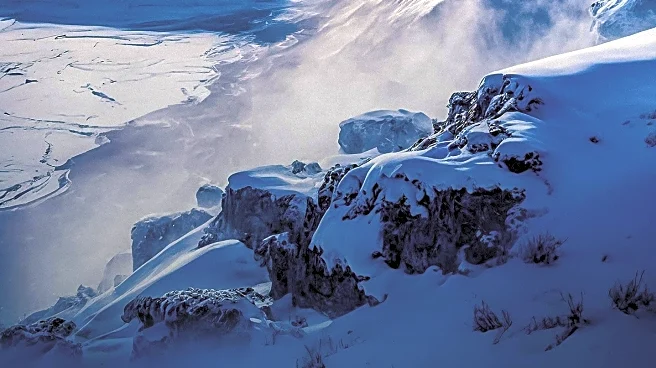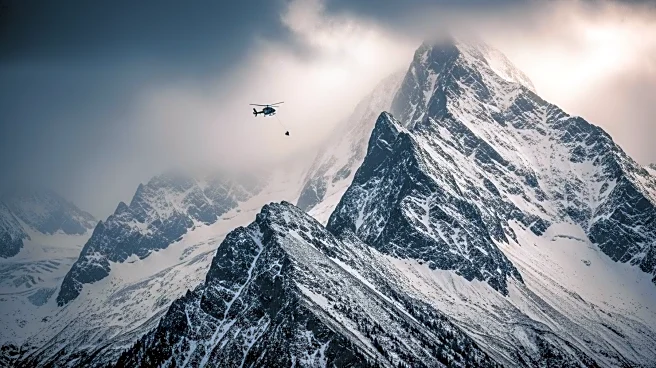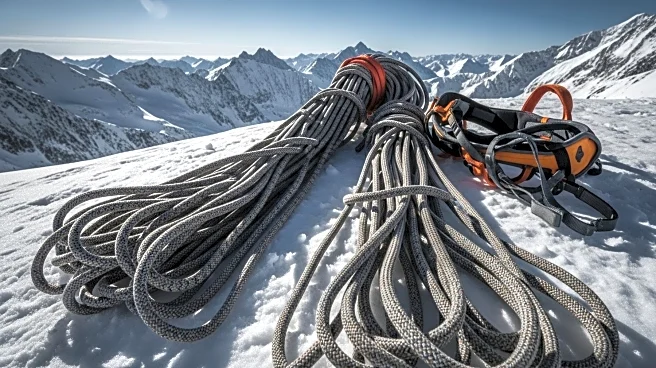What is the story about?
What's Happening?
Hundreds of hikers have been stranded near Mount Everest following a powerful blizzard that hit the Himalayas. The snowfall began on the evening of October 3 and continued through October 4, trapping approximately 1,000 people in the area. Rescue efforts are underway, with local villagers and rescue teams working to clear snow and provide assistance. As of Sunday, around 350 hikers have reached the township of Qudang, while contact has been made with over 200 additional hikers still stranded. The storm coincided with China's National Day Golden Week holiday, which saw increased visitation to the mountain. The adverse weather conditions have led to the suspension of ticket sales and entry to the Everest Scenic Area.
Why It's Important?
The situation on Mount Everest highlights the risks associated with high-altitude hiking, particularly during unexpected weather events. The blizzard has disrupted the peak visitation season, impacting tourism and local economies reliant on mountain expeditions. The rescue operation underscores the importance of preparedness and coordination in emergency situations, especially in remote areas. The incident may prompt a reevaluation of safety protocols and emergency response strategies for future expeditions. Additionally, the event draws attention to the potential consequences of climate variability, as unusual weather patterns can pose significant challenges to outdoor activities.
What's Next?
Rescue operations are expected to continue as authorities work to bring all stranded hikers to safety. The local government has organized teams to assist in clearing access routes and providing aid. The incident may lead to increased scrutiny of safety measures and regulations governing mountain expeditions. Stakeholders, including tourism operators and local authorities, may consider implementing stricter guidelines to ensure the safety of visitors during adverse weather conditions. The event could also influence future planning and infrastructure development in the region to better accommodate emergency situations.
Beyond the Headlines
The unexpected blizzard on Mount Everest raises questions about the impact of climate change on weather patterns in high-altitude regions. As global temperatures fluctuate, the frequency and intensity of such weather events may increase, posing challenges to outdoor activities and tourism. The incident also highlights the resilience and resourcefulness of local communities, who play a crucial role in emergency response efforts. Their involvement in rescue operations demonstrates the importance of community engagement and support in crisis situations.
AI Generated Content
Do you find this article useful?
